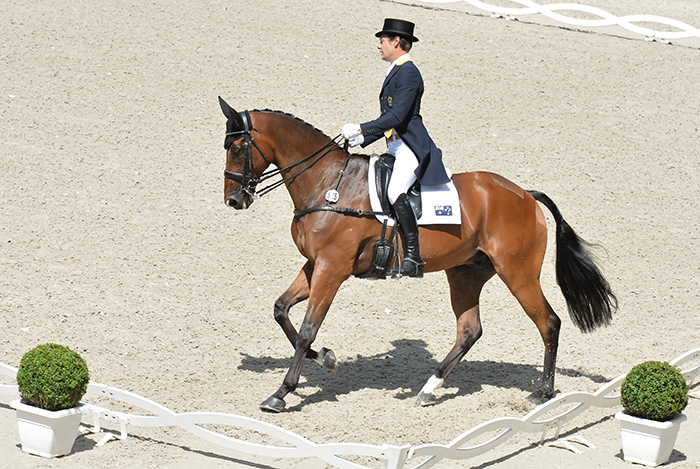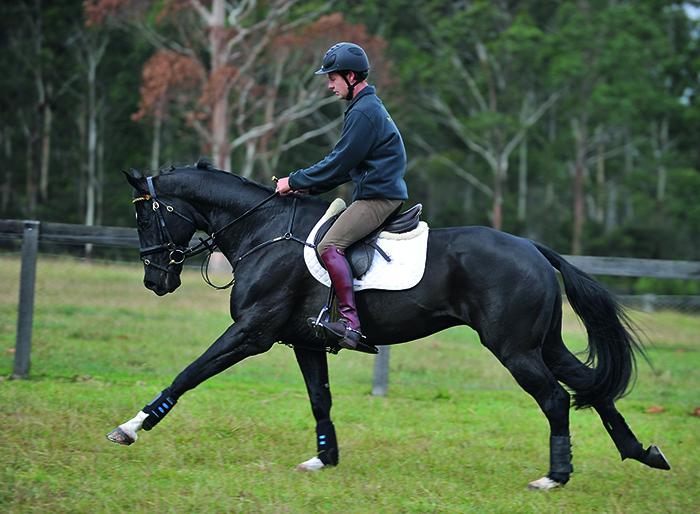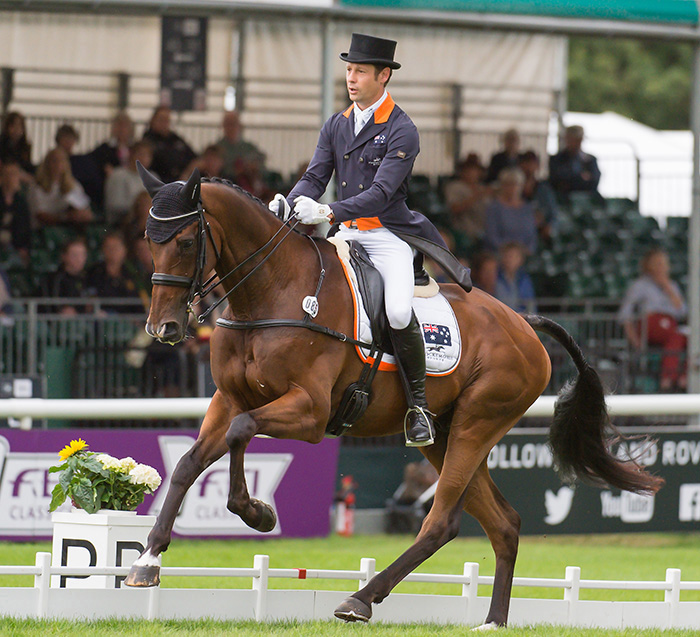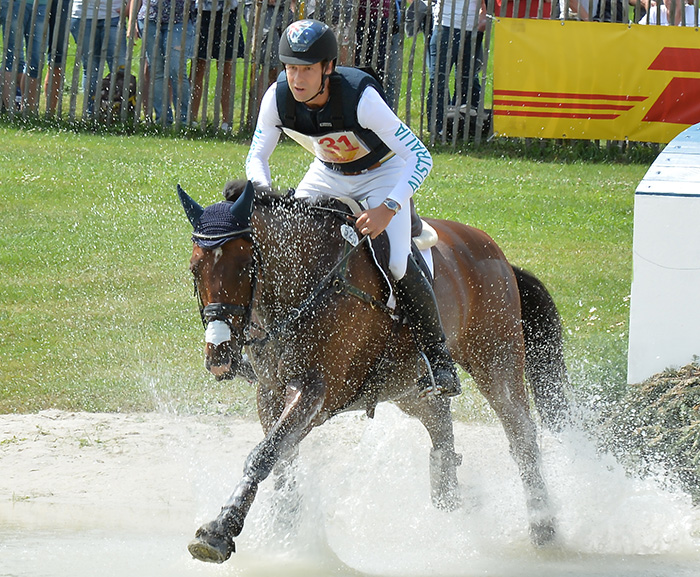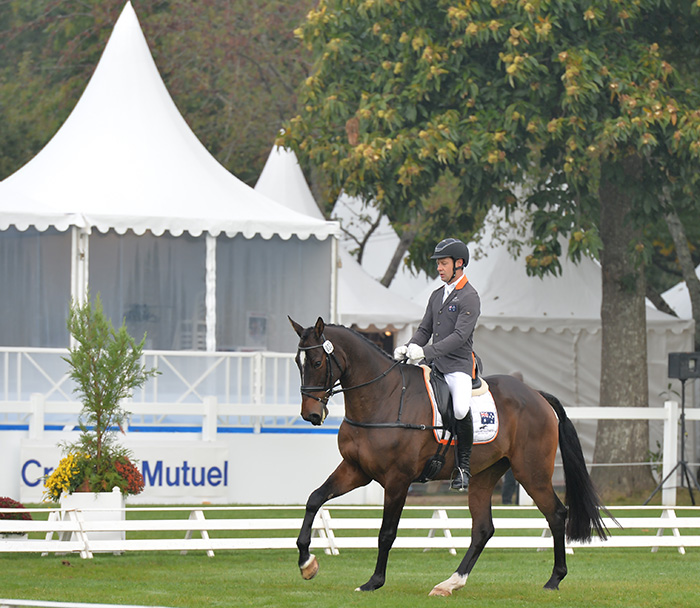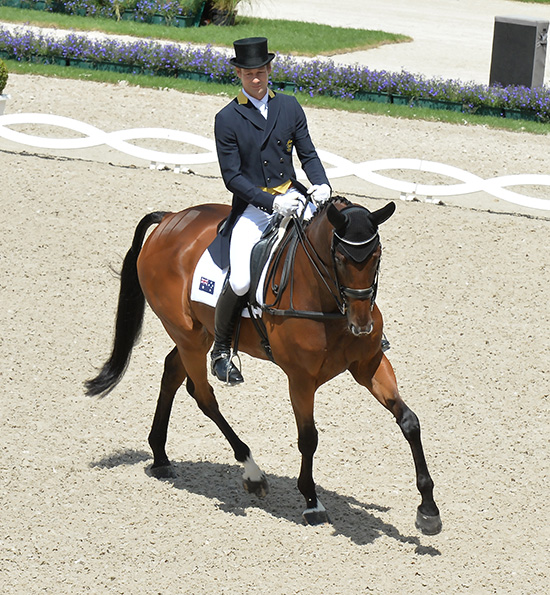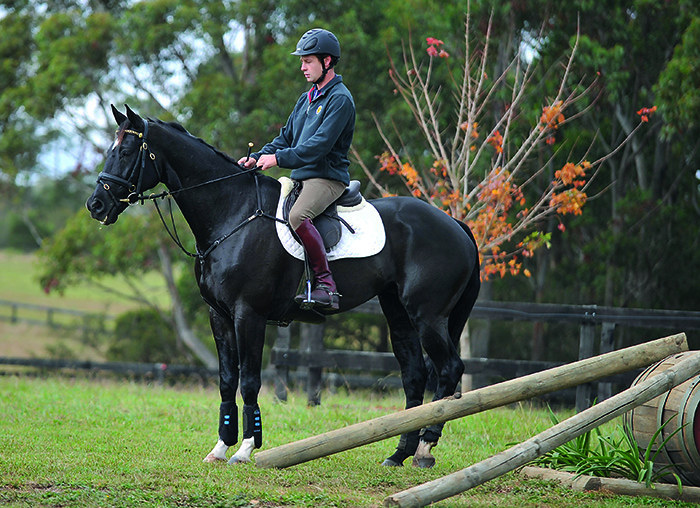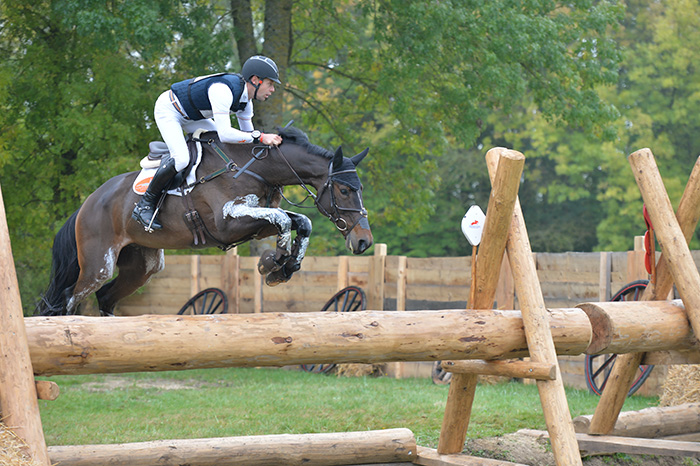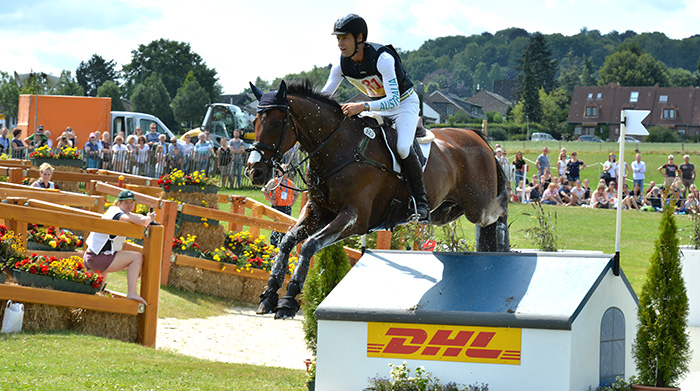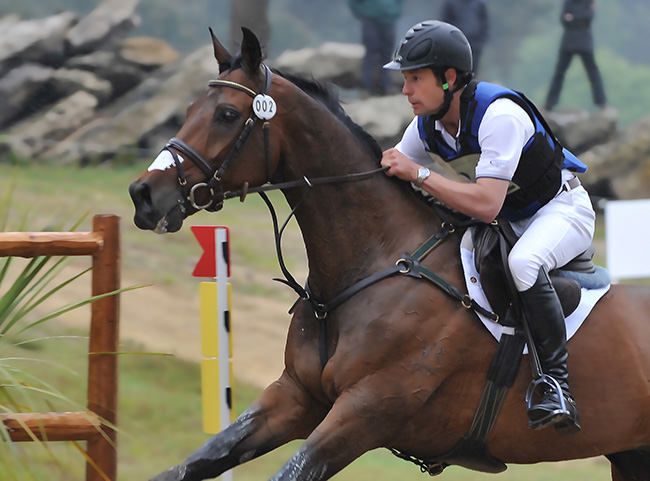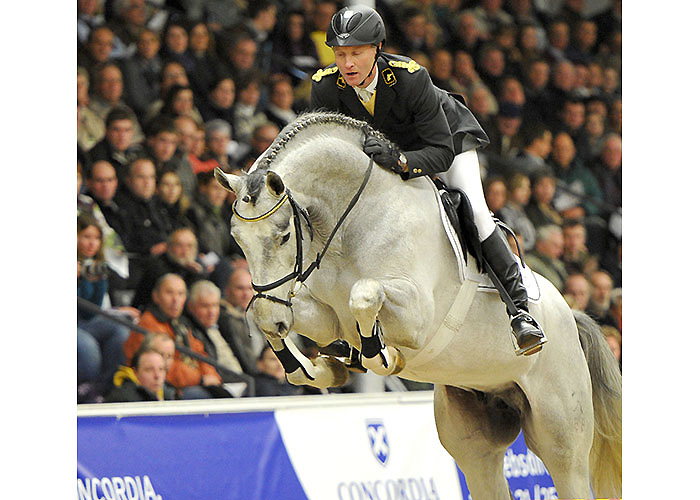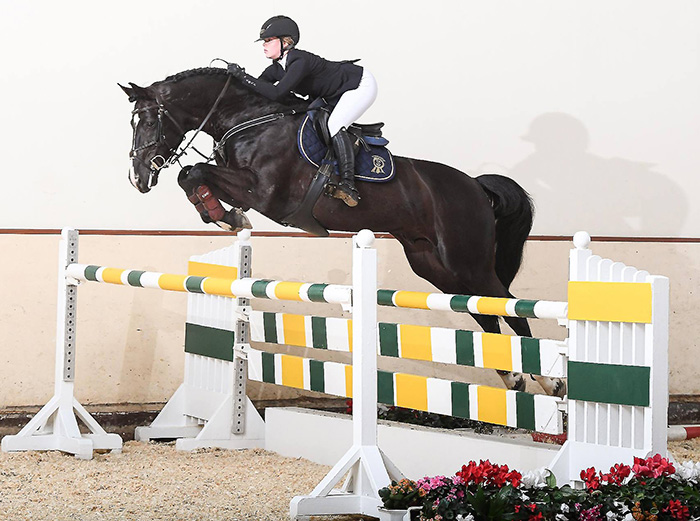Christopher Burton is a medal winning event rider, but he’s also a horseman. One of his greatest influences was the Stecken-trained Australian-based, Marianne Lichtwark, sadly no longer with us. It’s no wonder Christopher’s basics are so darned good…
“I think part of the problem is that a lot of riders don’t understand that the horse is not born knowing that pressure on the mouth means stop, you have to teach them that. They don’t instinctively know that pressure from the leg means go, we have to teach them that.”
“To train a horse, all we’ve really got is pressure and release and the truth is, you often need to be stricter or tougher to get the light result in the end, but it is a far nicer result in the long term.”
“I will work on some transitions within the pace. Can I slow the trot? Can I ride forward by giving and allowing forward?
So many people lock their horses up with the emphasis on round, that they lose the forward thinking. Forward and back in the trot. I want him to stay soft, I want it soft, so he’s carrying his own head. So I can ride without reins and he should stay in a similar frame, in a similar straightness, the only change when I give away the rein should be that he stretches a bit more.”
“Okay a fit three star horse can get a bit more excited when you start to work, but if you have been using this same warmup all through their career, it lets them settle, and it also gives me an indication of when they are ready to pick up and go to work. Establish the routine at home, and you end up with a horse with a healthy body and a healthy mind.”
Things I am passionate about, one is having the horse light to the aids, because I think this is nicer for horses in terms of their well-being and their mental state, in the long run.
“We’ve all seen light riders who are completely ineffective and this is a waste of time. But we do see tough riders who are always riding with strong aids, heavy with the hands and never releasing the pressure, and that’s something I’m very passionate about, something I hate seeing. I think it is something that even the FEI should be cracking down on…”
“If you ride a straight line and the horse is getting stronger in your hand, ride a circle, bend him, bend him.
If he is not listening to the half halt, what do we do? We make a halt. When I am teaching, I ask riders, what is a half halt? And I get these elaborate explanations involving seat and legs, no – a half halt is half a halt.”
“I train the halt a lot, but the halt in so many different ways. You would even see me doing it out cross country schooling – jump a cross country fence, canter away on a straight line and halt the horse. Repetition, repetition, until you can halt the horse with the feeling of an upwards transition – on a soft hand I can really halt the horse. It is a great way to close a horse up.
I do that a lot cross country schooling and a lot in my flat work schooling. If everything is going well, then you will find that the half halt improves quickly, and even on cross country, they will come back to you and relax before the complexes where you have to slow down, and this is how they can become a faster horse cross country, they are listening to you more easily.”
“You want to have your horses in neutral cruise, they keep doing what you’ve asked them to do, by themselves, until you ask them to do something else. 100% by themselves is the point. You can’t hold a horse, you are sitting on its back, the only way to hold them is to get off and put your feet on the ground. You’ve got to ask the horse, teach the horse, show it what you want it to do.”
Breeding an eventer this season? Check out the range of European stallions available in Australia at www.ihb.com.au
Like Grey Top

